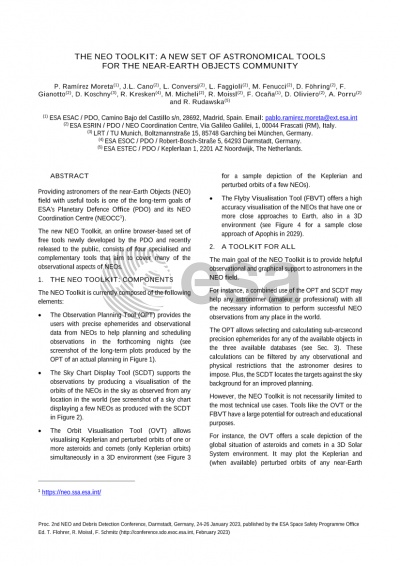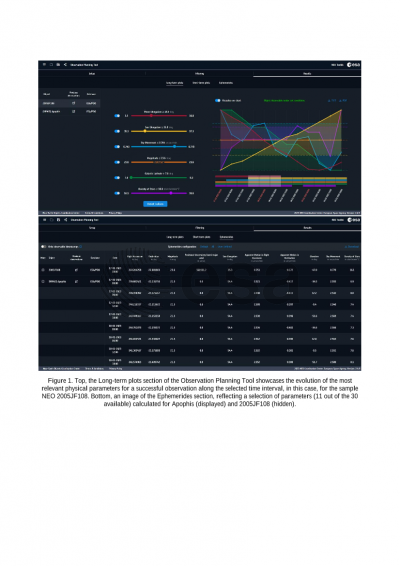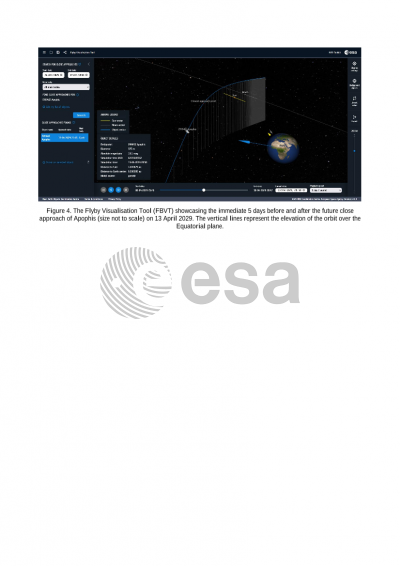Document details

Abstract
Providing astronomers with useful tools is one of the long-term goals of ESA's Planetary Defence Office (PDO) and its NEO Coordination Centre (NEOCC). The NEO Toolkit consists of four specialised and complementary tools that aim to cover many of the observational aspects of NEOs:
- The Observation Planning Tool (OPT) provides the users with precise ephemerides and observational data from NEOs to help them to plan and schedule observations in the forthcoming nights.
- The Sky Chart Display Tool (SCDT) supports the observations by producing a visualisation of the orbits of the NEOs in the sky as observed from any location in the world.
- The Orbit Visualisation Tool (OVT) allows visualising Keplerian and perturbed orbits of one or more simultaneous asteroids and comets in a 3D environment.
- The Flyby Visualisation Tool (FBVT) offers a high accuracy visualisation of the NEOs that have one or more close approaches to Earth, also in a 3D environment.
A combined use of the OPT and SCDT may provide any astronomer (amateur or professional) with all the necessary information to perform successful NEO observations. The OVT offers a scale depiction of the global situation of any individual, family or group of NEOs in the solar system, identifying those that may have a close approach to Earth (even past known impactors) and that can be featured with high mathematical detail in the FBVT.
The NEO Toolkit uses the large NEOCC database as its main resource for physical and orbital data, supported by data from the NEO Confirmation Page (NEOCP) and JPL's Small-Body Database of Near-Earth Comets. The system that continuously populates and updates the NEOCC database is Aegis, ESA’s PDO orbit determination and impact monitoring software. Last, the reliability and high computing power of the NEOCC servers supports the smooth operation of all the components of the NEO Toolkit.
The goal of this talk is twofold. The first and most important is to publicly present for the first time the four components of the NEO Toolkit by giving a brief introduction to each one of them as well as a live demonstration of the capabilities of the tools via scientifically relevant and realistic observational cases. The second is to encourage the participants to use the NEO Toolkit and share it with other potentially interested colleagues, with the aim of bringing forward any suggestions that might help improving it, making the NEO Toolkit as useful as possible for the NEO community.
Preview






